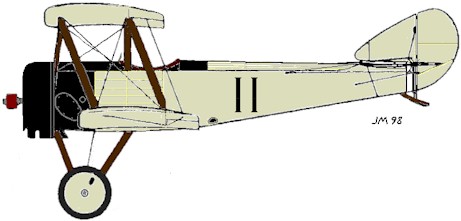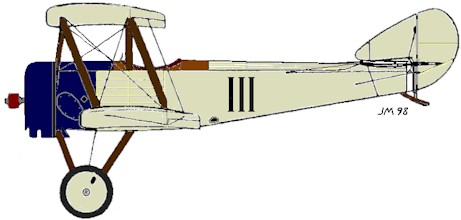Navy Sopwith Pup Fighter Brief history of the Pup The nimble little Sopwith Pup, so important for the British airforce during the Great War, was the choice for the Japanese Navy when testing the concept of flying airplanes off ships in the early 1920:ies. Never really intended as a Navy carrier fighter but still the prerequisite for what would within 20 years develop into the magnificent Zero fighter. Several surplus unarmed Sopwith Pups were bought by the Japanese Army after the Great War. A few went to the Navy asthey were impressed of the British success of flying Pup's off from ships. Experience with the Pup showed that the light airplane only needed a takeoff run of 8 meters into a 20 knots wind. The Japanese Navy commenced to evaluate the British idea by building a ramp on the forward deck of the transport ship In June 1920, Lieutenant Torao Kuwabara took off from Wakamiya's ramp in his Sopwith Pup and thus recording the Japanese Navy's first take off from a ship. To further develop the idea of launching planes from ships, a 18 meter long ramp was the following year built on one of the battleship Yamashiro's main forward turents. The Pup was eventually replaced by the more modern Gloster Sparrowhawk and later the Mitsubishi Type 10 fighters and some other imported airplanes that were flown from the ramp before the aircraft carrier Hosho was finnished. Profiles The Pup's used by the Japanese Navy had their cloth covered wings and fuselage in a light tan color (clear dope) and the aluminum covered areas in a dark color. The dark paint being black or dark grey. Their is also a possibility that the dark color was dark blue as some sources mention early Navy float planes having their cowlings in blue. The Pup had the upper decking around the cockpit covered with plywood. The wood was on British Pup's both covered with clear varnish and painted in an olive/brown camouflage. The few photographs of Navy Pup's shows this area with a lighter shade compared to the dark painted aluminum. This could be due to two reasons, the wood was clear varnished also on the Japanese Pup's or it is simply the different surfaces of aluminum and wood that gives the shade difference. Impossible to know for sure.
At least three Pup's were used for test on the battleship Yamashiro. The only marking on these aircraft's was the roman digits I, II and III identifying each aircraft. The profile above shows Pup number 2 on Yamashiro in the most probable colors for the Pup. Tan wings and fuselage, the aluminum and wood covered areas in black or dark grey. The next profile is more hypothetical but maybe not wrong. It is Pup number 3 on the battleship also in tan but with the aluminum cowling and front area in dark blue and the plywood decking only varnished. Note that the roman bars are closer than on number 2.
No Hinomarus, serial number or other standard marking were applied to the Navy Pup's. As a note, Army Pups retained the British Pup camouflage of olive/brown with Hinomarus replacing the British roundels and standard marking such as serial number and lift markings. Maybe the lack of markings on the Navy Pup's is due that they were striped of it's canvas clothing and had it replaced with new. Profile reference
|

